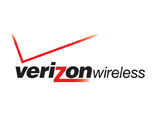While Verizon leverages its 4G LTE wireless network as a rural broadband solution, AT&T shows no signs of sharing Big Red’s enthusiasm (and investment).
In fact, while AT&T celebrates the end of its U-verse fiber-to-the-neighborhood expansion and admits it has no answer to America’s rural broadband problem, the always excellent DSL Prime by Dave Burstein reports AT&T is mulling a sale of its rural DSL operations to a third party provider, essentially letting the new owner(s) deal with the rural broadband problem:
[AT&T] is “doing a rapid tech evaluation” of whether they can upgrade their DSL + wireless to “a competitive broadband product.” But Randall “doesn’t see a solution.” If that’s confirmed, “we’re looking for others who might want the properties.” […] It’s unclear if any of the “rural carriers” – Century, Frontier, Windstream – have the financial ability to make an attractive offer. If operators can’t raise the money, [AT&T] would need to make a financial transaction.
Verizon has sold off its entire “wireline” (landline infrastructure and business) operation in smaller, rural states — often properties it acquired years earlier from GTE — to focus on more lucrative urban markets. AT&T could either spinoff its broadband operation to a third party to run or follow Verizon and sell off entire rural service areas not already upgraded for AT&T’s more modern U-verse.
Likely buyers include FairPoint Communications, Frontier Communications, CenturyLink, and Windstream — all independent traditional landline operators trying to focus on less-competitive rural markets pitching DSL broadband service.
AT&T has shown little interest investing in rural service areas located primarily in the southern and central United States. As Karl Bode writes on Broadband Reports, AT&T is on record stating that they can’t find an “economically viable” way to upgrade these users, despite a looming increase in faster and less expensive last mile DSL technologies.
As AT&T has sought to redefine itself as a wireless company, the buildout of its wireless network could bring AT&T to also eventually pitch 4G wireless Internet service to its former DSL customers. But like Verizon, those plans would likely include severely usage-capped service, while leaving its traditional DSL product starved for investment.


 Subscribe
Subscribe




